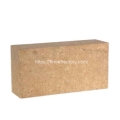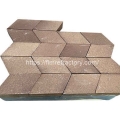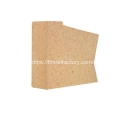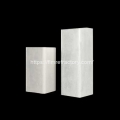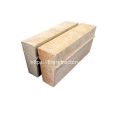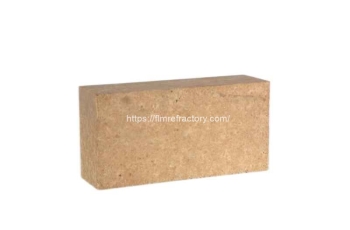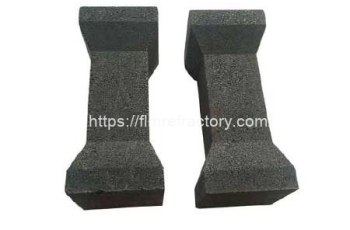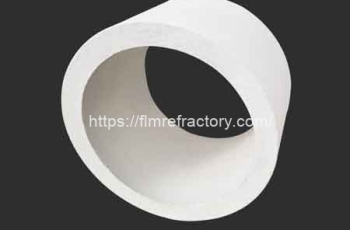- Performance. Innovation. Worldwide. Your trustworthy Refractories Manufacturing Partner--Fireramo
- +86 175 3769 7777
High Alumina Brick
- Category: Alumina Brick
- |
- Author: Fireramo
We provide you with high quality High Aluminum Bricks and sale & export High Aluminum Bricks at factory price. You can also inform us about your requirements and we can provide you with customized services.
- Origin: China
- Application: Industrial Furnaces and Equipment
- Raw Material: Bauxite
- Refractoriness: ≥1700℃
- Al2O3: ≥48%
- Refractoriness Under Load 0.2 MPa : ≥1420℃
- Capacity: 3000 MT per month
- Package: Export wooden pallets and polyboard
Search
Contact
High quality refractory bricks
Product Details
High Alumina Refractory Brick
Fireamo High Alumina Brick Description
High alumina bricks, also known as alumina refractory bricks, are a type of refractory material with an alumina content of more than 48%. High alumina bricks are mainly made from preferred bauxite clinker, which is sintered at temperatures ranging from 1420 to 1530 °C.
High alumina bricks are well suited for industrial applications that require resistance to high temperatures, abrasion and corrosion. High alumina refractory bricks are ideally suited for industrial applications that require high temperature, abrasion and corrosion resistant environments.They are commonly used in the construction of furnaces, kilns, incinerators and other high-temperature equipment as linings or insulation.
What is a high alumina brick?
Depending on the Al2O3 content, high alumina bricks are usually classified into three grades: I ーー Al2O3 content > 75%; II ーー Al2O3 content 60 ~ 75%; III ーー Al2O3 content 48 ~ 60%.



Fireamo High Alumina Brick Features
High alumina refractory bricks are known for their excellent properties and performance and are therefore suitable for a wide range of industrial applications.
High alumina content
The main component of high alumina bricks is alumina (Al2O3), which is usually in the range of 50% to 95% or even higher. This high alumina content gives the bricks excellent refractory properties.
High Temperature Resistance
High alumina bricks can withstand refractory temperatures of over 1770°C, making them suitable for applications with temperatures in excess of 1500°C (2732°F). They maintain strength and structural integrity even at high temperatures.
Thermal Stability
High alumina bricks have excellent thermal stability and can withstand repeated thermal cycling without significant degradation. Their low thermal expansion reduces the risk of cracking or spalling due to thermal stress.
CHEMICAL RESISTANCE
High Alumina Bricks have excellent chemical resistance to a wide range of corrosive media such as acids, alkalis and gases. They can withstand chemical reactions and maintain their integrity in aggressive environments.
Abrasion Resistance
These bricks have good abrasion resistance and can withstand mechanical wear caused by solids, liquids or gases in industrial processes. They are less susceptible to erosion or erosion-related failures.
Low porosity
High alumina bricks have low porosity, which means they have a dense and compact structure. This property helps to minimize the penetration of molten materials and gases, enhancing their resistance to corrosion and thermal shock.
Good insulating properties
High alumina bricks provide good thermal insulation, minimizing heat transfer and improving energy efficiency in high-temperature applications.
Outstanding strength and mechanical properties
High-alumina bricks have high mechanical strength and can withstand mechanical loads and structural stresses. They maintain their shape and integrity under pressure.
Easy to install and maintain
High-alumina bricks are relatively simple to install and maintain. They can be molded and cut to fit different equipment configurations, and damaged bricks can be replaced individually without affecting the entire liner.
Fireamo High Alumina Brick Application
The versatility, high temperature resistance, chemical stability and excellent refractory properties of high alumina bricks make them indispensable for a wide range of industries requiring durable and reliable refractory materials.
Steel industry
High alumina bricks are widely used in the steelmaking process. They are used as linings in various steel production units such as blast furnaces, hot blast furnaces, electric arc furnaces, ladles and continuous casting tanks. These bricks provide thermal insulation, erosion resistance and high temperature stability in the harsh steelmaking environment.
Cement Industry
High alumina bricks are used in the combustion chambers of cement kilns and rotary kilns to provide thermal protection against high temperatures and chemical reactions. They help maintain the structural integrity of the kiln and improve energy efficiency.
Glass Industry
High alumina bricks are used in glass kilns as linings for the melting and refining zones. They can withstand the extreme temperatures and corrosive conditions of the glass production process, ensuring the longevity of the kiln and maintaining the quality of the glass.
Petrochemical industry
High alumina bricks are used in a variety of petrochemical processes, including catalytic crackers, reformers and fluidized bed reactors. Their resistance to high temperatures and aggressive chemical environments ensures equipment durability and performance.
Non-ferrous metals industry
High alumina bricks are used in smelting and refining processes for non-ferrous metals such as aluminum, copper and zinc. High alumina bricks are used in masonry furnaces and reactors to withstand the high temperatures and chemical reactions involved in metal production.
Incineration and waste treatment
High alumina bricks are used in combustion chambers and flues in incinerators and waste treatment plants. Their excellent heat resistance, chemical stability and resistance to corrosive gases ensure efficient and long-lasting waste treatment operations.
Ceramic industry
High-alumina bricks are used in ceramic kilns and for the firing of ceramic products. High-alumina bricks provide thermal insulation and resistance to high temperatures, ensuring even heat distribution and energy efficiency in ceramic production.
Power generation
High-alumina bricks are used in combustion chambers and other high-temperature areas of boilers and thermal power plants. Under the harsh conditions of power plants, high alumina bricks provide thermal insulation, corrosion resistance and structural integrity.
Fireramo High-alumina bricks Specifications
| High Alumina Brick | LZ-48 | LZ-55 | LZ-65 | LZ-70 | LZ-75 | LZ-80 | |
|---|---|---|---|---|---|---|---|
| Al2O3(%) | 48 | 55 | 65 | 70 | 75 | 80 | |
| Apparent Porosity(%) | 22 | 22 | 23 | 23 | 23 | 22 | |
| Cold Crushing Strength(%) | 35 | 40 | 45 | 50 | 50 | 55 | |
| 0.2 MPa Refractoriness Under Load (ºC) | 1420 | 1450 | 1500 | 1500 | 1520 | 1530 | |
| Permanent Linear Change (%) | 1500ºC*2hr | – | -0.4~0.1 | ||||
| 1450ºC*2hr | -0.4~0.1 | – |
Specializing in refractory materials for over 20 years, we provide professional refractory solutions for the global high temperature industry.
Theme By Fireramo
